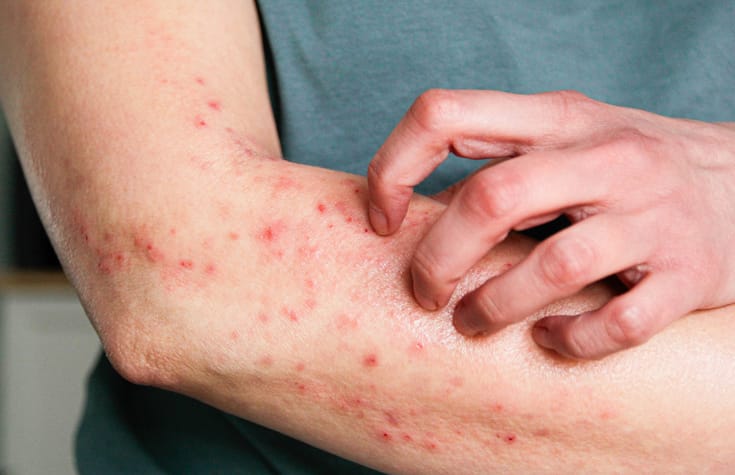Cutaneous mastocytosis is most often diagnosed in children, and usually goes away by the time a patient is in their teens. But it doesn’t always fade — and it can first appear when a patient is well into adulthood, too. In both cases, cutaneous mastocytosis can eventually progress into systemic mastocytosis (SM).
What is cutaneous mastocytosis?
Cutaneous mastocytosis and SM are both caused by overactive mast cells. The main difference is their location: In cutaneous mastocytosis they affect the skin, creating itchy sores, while in SM they affect many additional areas throughout the body, including the organs, bone marrow, liver and gastrointestinal tract.
In the most common form of cutaneous mastocytosis, maculopapular cutaneous mastocytosis, abnormal mast cells are produced in excessive quantities and build up under the skin. Mast cell activity causes the skin to become itchy and irritated, with red or brown sores that bleed when scratched. It usually occurs in babies and toddlers and improves over time.
In most cases, cutaneous mastocytosis disappears by puberty. When it doesn’t, patients have a 10% chance of the disease progressing into SM.
However, cutaneous mastocytosis can also appear in adults who never experienced it in childhood. In these patients, there’s a 90% chance that cutaneous mastocytosis will develop into SM.
Read more about SM causes and risk factors
How to know if cutaneous mastocytosis is becoming systemic
If you have been diagnosed with cutaneous mastocytosis, your healthcare team will monitor you closely for any changes in your symptom burden. Treatment of your cutaneous symptoms include antihistamines, topical steroids and mast cell stabilizers.
If cutaneous mastocytosis progresses into the systemic form of the disease, catching it early will mean you can start treating SM in its earliest stages. When the disease becomes systemic, its symptom burden increases. Patients will need a new treatment plan, and will likely need to make lifestyle changes and learn to avoid certain triggers.
New symptoms that may indicate cutaneous mastocytosis is progressing to SM include:
- Flushing of the face, hives, redness of the skin.
- Fatigue.
- Abdominal pain, nausea, diarrhea.
- Low blood pressure.
- Bone and joint pain.
- Enlarged liver, spleen or lymph nodes.
- Unexplained bone fractures.
If your care team suspects you have SM, you will receive diagnostic testing to find the cause of your new symptoms. This may include:
- Blood tests to check the levels of the protein tryptase in the blood. Higher tryptase levels are a strong indicator of a progression to systemic disease. A full blood count and liver function tests will check for anemia and determine whether the organs are affected.
- Imaging will check for the enlargement of organs and for potential impact on the bones.
- A bone marrow biopsy to look for clusters of abnormal mast cells, the KIT D816V gene mutation and abnormal surface markers on the mast cells (CD25 and CD2).
Sign up here to get the latest news, perspectives, and information about SM sent directly to your inbox. Registration is free and only takes a minute.

